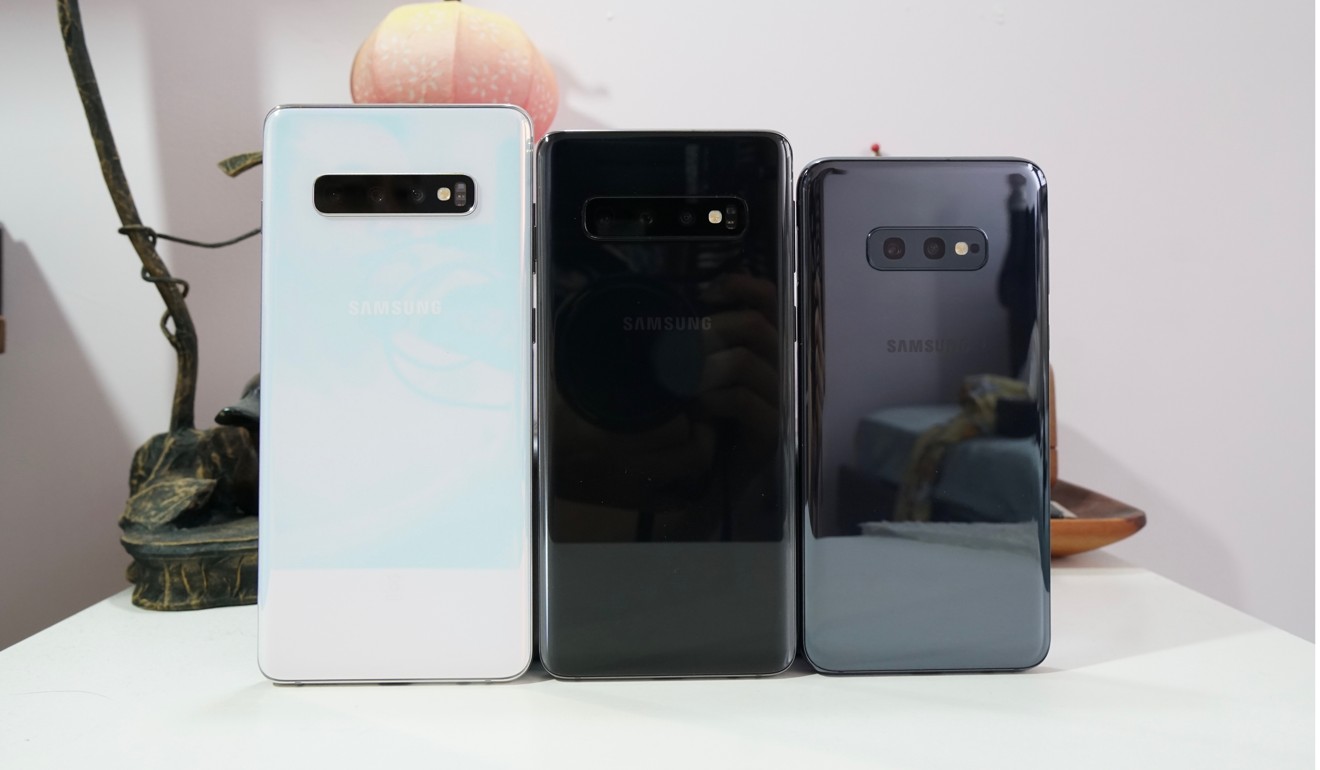
Samsung Galaxy S10: best phone overall is sleek and stunning, with looks to rival Apple
- Review covers all three models of the S10 series – the standard S10, larger S10+, and lower tier S10E
- Top two models exude a highly premium feeling in ways that only Apple and Huawei can achieve, but camera performance could be better
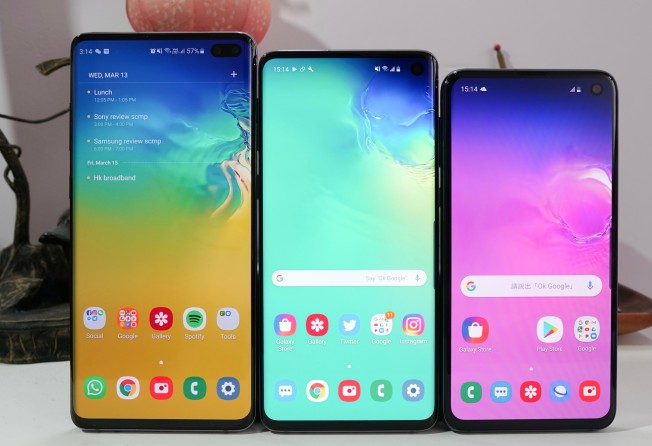
In 2018, when almost every Android brand blatantly copied the iPhone X’s notch design, Samsung decided to fight the trend and stick with traditional bezels with its S9 release. It was a move that might have contributed to the South Korean tech giant’s lacklustre phone sales last year, as reviewers and consumers generally found the handset relatively boring.
Samsung should have no such problems this year. For the 10th anniversary of its flagship S line, the company has pulled out all the stops to deliver a trio of powerful, sleek handsets that have a mostly unique identity and look from the sea of phones out there. This review covers all three models of the S10 series – the standard S10, larger S10+, and lower tier S10E.
Design and hardware
The Galaxy S10 and S10+ are clear evolutions of the S series, with the gorgeous, ultra hi-res curved displays (6.4-inch on the +, 6.1-inch on the standard S10), resulting in a visually mesmerising look, even if the screen curvatures don’t serve much practical use.

The smaller S10E, however, resembles a notch-less iPhone X, with a flat display panel and more rounded corners. The S10E’s display resolution is also lower, at roughly 1080p. But since the screen is smaller (5.8-inches) the lower pixel count doesn’t suffer much.
This is still a Samsung OLED panel – the best in the business – and the screens on all three are sharp, vibrant and brighter than any other phone on the market.
The top bezel of the S10 series has been eliminated, with the selfie camera housed in a hole drilled into the display panel. This technology, dubbed “hole-punch display”, was first seen in the Honor View 20 two months ago, but for most consumers in the West, this will be their first time seeing such a design.
Like the iPhone’s notch, the hole-punch design is obviously still a design compromise, but it is less intrusive than the notch simply because the chunk of screen missing is smaller. I personally prefer the hole-punch over the notch, though I have heard others say otherwise.
All three handsets are powered by Qualcomm’s latest chipset, the Snapdragon 855, built on the same cutting-edge 7-nm technology as Huawei’s Kirin 980 and Apple’s A12 Bionic chip. It is more than powerful enough to handle any task.
In terms of cameras, the S10 and S10+ offer a triple-camera array on the back; in addition to last year’s standard and telephoto set-up is a new wide-angle lens that can capture images with 123-degree field of vision.

The S10E ditches the telephoto zoom lens and keeps just a normal – and wide-angle – set-up. Around the front, the S10 and S10E each sport a single selfie camera, with the big brother S10+ getting a secondary front-firing, depth-sensing camera, which results in a larger hole-punch.
While the S10E looks fine, the S10 and S10+ are on another level of sleek industrial design. The curvature of the phones’ front and back make for a very comfortable in-hand feel.
Software and features
All three models run on exactly the same software: Android 9 with Samsung’s revamped skin, named One UI, on top. Samsung advertises the One UI as a major design overhaul with an emphasis on one-hand usability.
But other than moving some buttons and tabs to the bottom of the display for easier thumb reach, the software experience is still similar. Those who found the S9+ too large to use with one hand will have the same issue with the S10+.
Samsung did listen to feedback, as One UI contains less bloatware than before. Still not the best Android skin by any stretch, but a step in the right direction.
Underneath the display of the S10 and S10+ are ultrasonic fingerprint scanners. This tech differs from the other in-display fingerprint reader in that it uses sound vibration emitted from the phone to detect fingerprints (like a radar) instead of the optical light used in recent Vivo or OnePlus devices.
The S10E gets no such futuristic tech, instead settling for a traditional fingerprint scanner located on the right side of the phone.
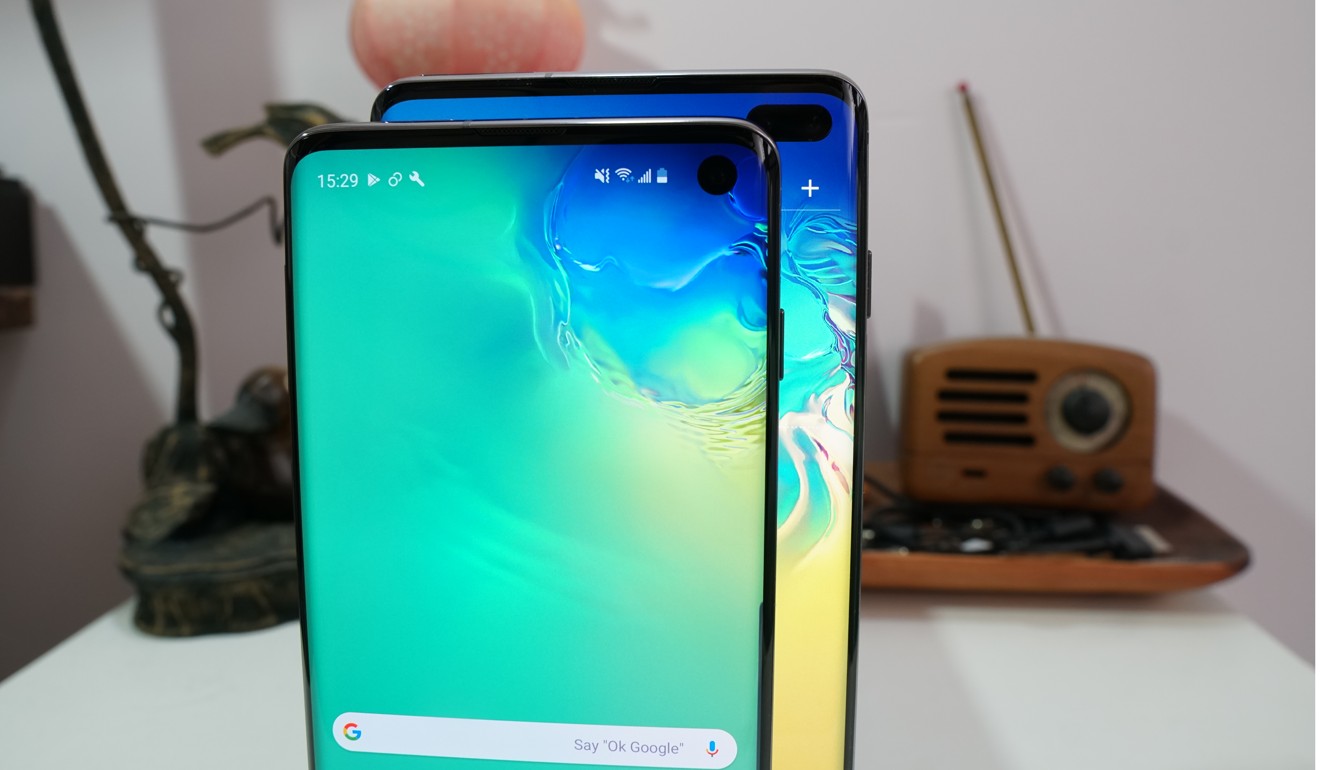
Performance and battery life
Going by specs, the S10E seems like it would be an inferior performer, considering it has less RAM (6GB vs the 8GB on the other two models), and one less rear camera. But for the most part, performance across all three are the same.
Running on less memory didn’t seem to slow down the S10E at all, partly because the processor is so new and top-of-the-line. And that missing telephoto lens only comes into play and becomes noticeable when zooming.
In the sample below, notice that the S10E’s 4X zoom is noticeably less sharp and noisier than the same shot captured with the S10+.
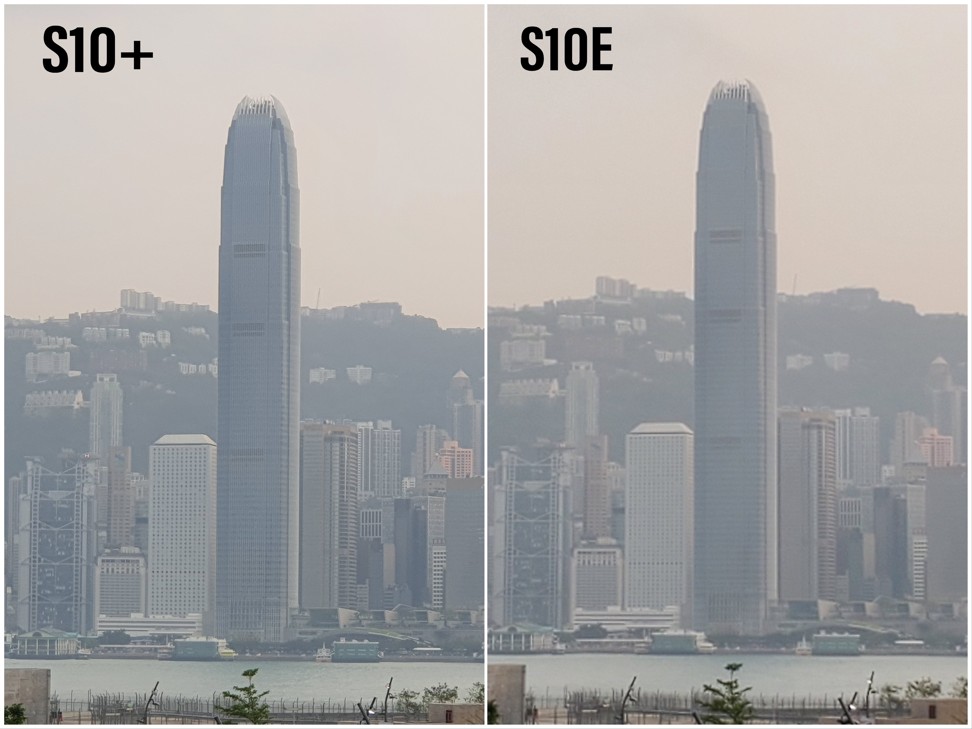
Otherwise, the main camera, wide-angle lens, and video recording capabilities are identical across all models, which is to say they’re very good, but not the best.
Samsung’s take on the wide-angle camera is admirable as a first attempt, but there is barrel distortion around the corners. Such distortion is unavoidable when shooting with a wide-angle lens, but Huawei and LG manage to fix most of it via software.
With a variable aperture that jumps between f/1.5 or f/2.4, the S10 series’ main camera almost always finds the right balance and doesn’t overexpose as easily as other devices on the market.
Samsung’s auto-focusing is also an industry best – the S10 cameras can pinpoint and lock onto objects faster than any other phone.
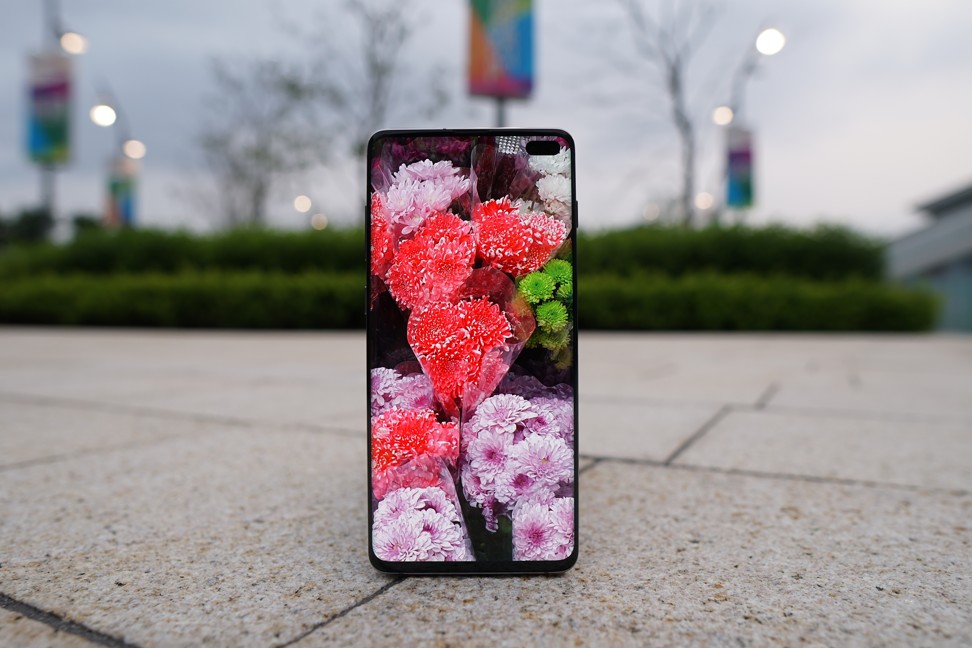
Video recording is also excellent, with superb optical and electronic stabilisation all the way up to 4K/30fps.
One crucial thing missing on Samsung’s phones is an AI-assisted night mode, which was pioneered by Huawei last year and Google has since refined to critical acclaim.
What those phones can do is capture multiple images over a two-three second span, and then use AI-assisted algorithm to stitch them together to produce one photo that’s unusually bright, balanced and sharp.
Without this feature, the camera on the S10 series is less versatile at night than competitors.
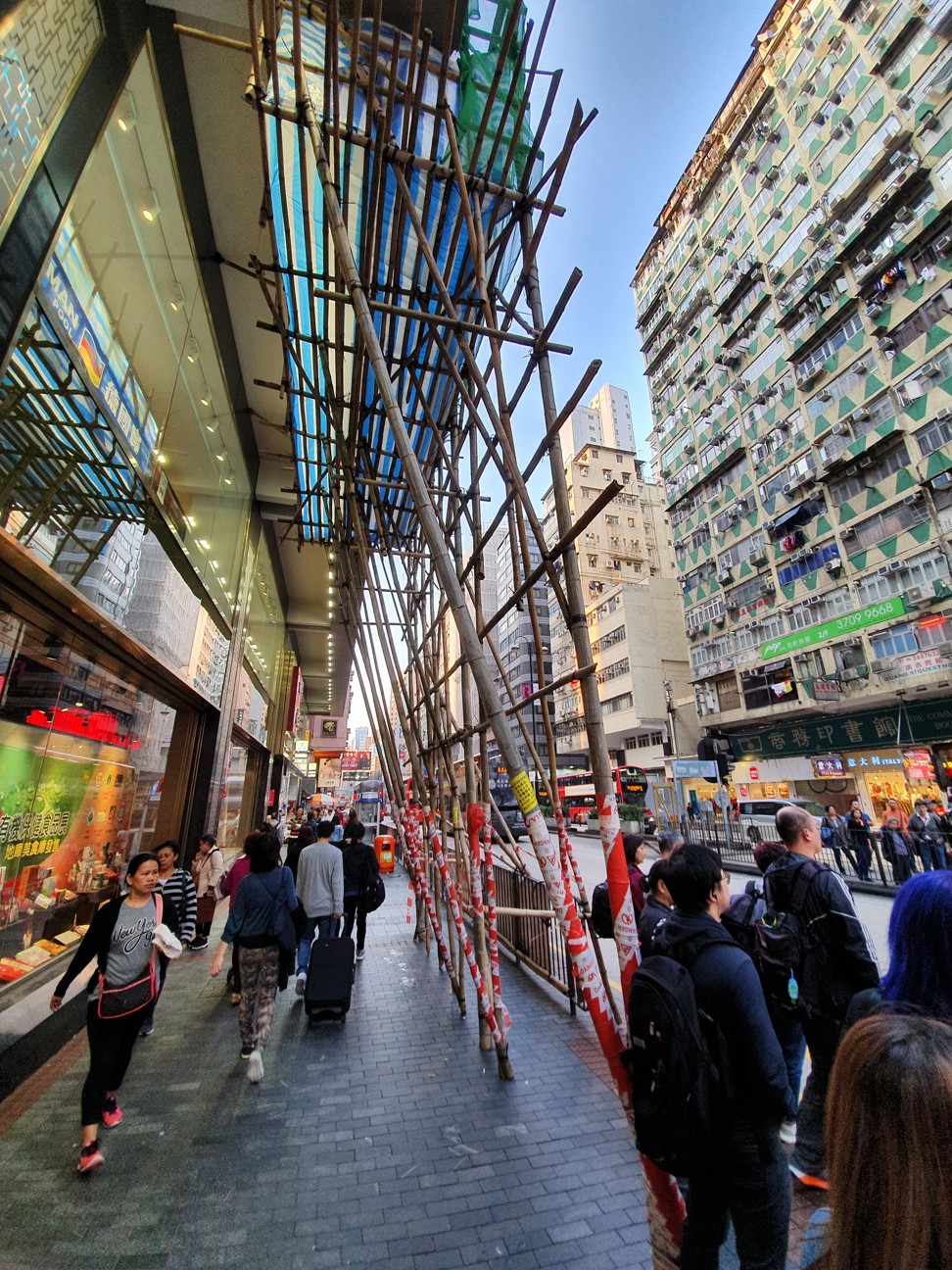
Battery life is above average for all three handsets, too, with the larger S10+’s 4,100mAh cell offering the most juice. From my usage, the S10+ never ran out of power during the course of a day, while the other two could go almost an entire day, but not quite.
Conclusion
If you’re on the lookout for a new phone, and you want the best overall package, the S10 series – particularly the top two models – is it.
Sure, camera performance could be better, but the entire package exudes a highly premium feel in ways that only Apple and Huawei can achieve.
Personally, I like the hole-punch look much better than the notches on the iPhone XS or Huawei Mate 20 Pro.
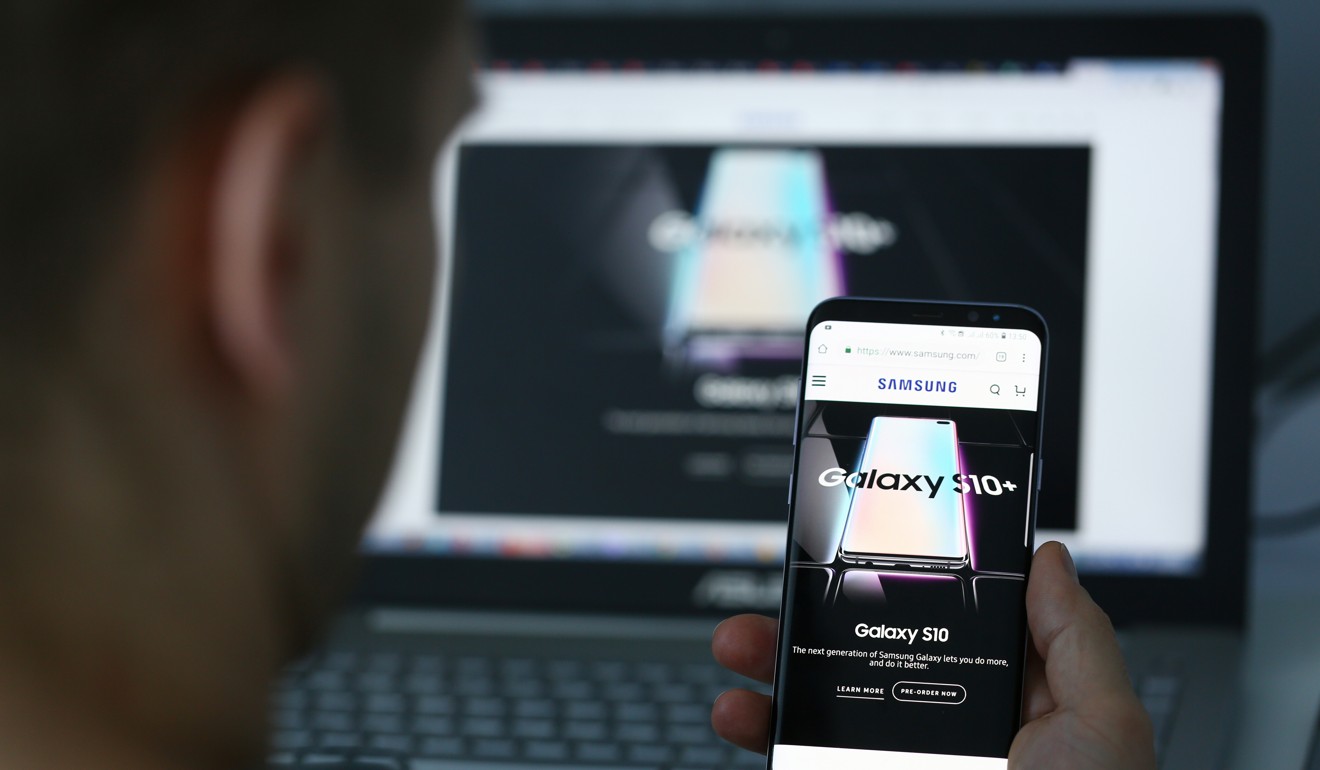
Key specifications:
S10+
Dimensions: 157.6mm x 74.1mm x 7.8mm
Weight: 175g
Display: 6.4-inch OLED display
Battery: 4,100mAh
Cameras: Triple camera set-up with 12-megapixel standard lens, 16-megapixel wide-angle lens, 12-megapixel telephoto lens; 10-megapixel selfie camera; additional depth-sensing selfie camera
Memory: 8/12GB RAM; 128GB/512GB/1TB ROM
Price: Starts at HK$6,440
S10
Dimensions: 150mm x 70.4mm x 7.8mm
Weight: 157g
Display: 6.1-inch OLED display
Battery: 3,400mAh
Cameras: Triple camera set-up with 12-megapixel standard lens, 16-megapixel wide-angle lens, 12-megapixel telephoto lens; 10-megapixel selfie camera
Memory: 8/12GB RAM; 128GB/512GB/1TB ROM
Price: Starts at HK$5,499
S10E
Dimensions: 142.2mm x 70mm x 7.9mm
Weight: 150g
Display: 5.8-inch OLED display
Battery: 3,100mAh
Cameras: Dual camera set-up with 12-megapixel standard lens and 16-megapixel wide-angle lens; 10-megapixel selfie camera
Memory: 6/8GB RAM; 128GB/256GB ROM
Price: Starts at HK$4,760
All models:
OS version reviewed: Android 9 with Samsung’s One UI on top
Processor: Snapdragon 855
Colours: Prism black, prism white, prism blue, prism green